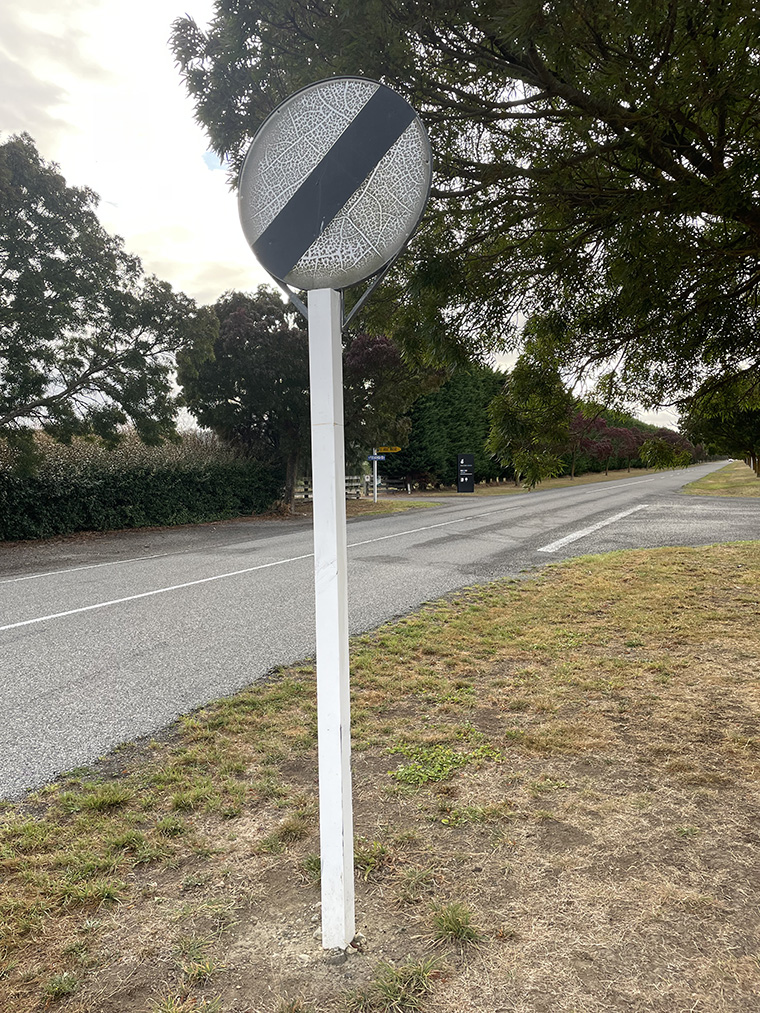As Martinborough considers safer streets, it emerges that the Martinborough Business Association petitioned the district council three years ago, asking that the “significant numbers of pedestrians and cyclists” visiting the town be allowed “to use our streets and roads in a friendly and safe way, that does not unnecessarily impede motor vehicle flows.”
“Making it clear to everyone that we are a walking and cycling friendly village … would seem to be a sensible way forward,” Association members including bike hire groups, wrote in a detailed submission to the council, apparently lost in the files.
Its title: “Optimisation of motor vehicle and cycle traffic in Martinborough. A strategy for risk minimisation and village development – A discussion document.”
It may never have been discussed.
According to one safety advocate the proposals outlined in the report “got a luke-warm response” and were not pursued further by the council or officials.
Current estimates put the number of bikes and walkers on wine village streets most weekends at around 1,000 people – some of them on multi-bikes which transport four or six visitors at a time.
It was a quad multi-bike hit by a car in a 100 kilometre-per-hour zone on Puruatanga Road which saw a woman tourist killed and three other tourists seriously injured.
The report focuses squarely on the road speed dangers posed by fast-moving traffic.
“Moving vehicles are potential people killing or maiming machines if operated in an unsafe manner. “In our work environments operating such machinery is accompanied by appropriate risk minimisation strategies,” it adds. “It should be no different on our streets and roads.”
And, presciently: “We want our tourists to come home safely to their friends and families after their day out.”
The report warns that some of the town’s higher road speed limits “are now clearly not in line with current road conditions or usage.”
It notes that those “higher than necessary speed limits send the wrong signal to motorists,” and details that 100 kph open road speeds are permitted on at least five stretches of roadway within the town’s winery/vineyard precinct.

The report then turns to the local economy, and notes that tourism is a key driver.
“Walking and cycling tourists visiting our wineries and other attractions have become an important economic resource for the village,” it says in a statement of the obvious.
Then a proposal: “Making it clear to everyone that we are a walking and cycling-friendly village … would seem to be a sensible way forward?” The question mark is in the report’s text.
The submission predates the Coalition Government’s explanation for reversing the planned nationwide speed reductions – to save time and improve productivity, as advanced by former Transport Minister Simeon Brown.
Said the MBA: “Keeping our tourists safe from injury or death (on the roads) is of critical importance to us – more important that allowing motor vehicle(s) to save seconds or minutes in getting from A to B.
“The difference in time for motorists to travel at slower speeds would be measured in seconds – and the higher-than-necessary speed limits send the wrong signal to motorists,” it told the district’s elected councillors and officials.
The proposal then focuses on options for calming traffic throughout the town, providing a “street analysis” for routes likely to be used by cycle and foot traffic.
First, it recommends that outer or “boundary” roads should have speed limits of “40km per hour when cyclists or pedestrians are present on a road,” placing “the onus on the vehicle driver to slow down when encountering people at risk.”
The report calls for “share the road” and “give cyclists 1.5 m(etre) clearance” signage throughout the village and to consider “funky” signs like “This is a cycle and walking friendly village.”
It lists five stretches of roading designated as 100 kph open road areas around the winery zone which should be 40kph “when cyclists or pedestrians (are) present.”
The report says the Huangarua/Puruatanga Road “Golden Mile” (scene of the fatal accident) which has 70 and 100 kph speed zones should be “all 50km – and 40km per hour when cyclists are present.”
It also proposes a cycle path on either side of Puruatanga road, or alternately using the common French road-use strategy with “the whole road one way for motor vehicle traffic with half of the road separated off and dedicated to cyclists.”
It classified action on change to the current traffic rules as having the “Highest Priority.”
Another key roadway is State Highway 53 from the Todd’s Cutting rise to St Antony’s Catholic Church – where vehicles slow from 100 kph to 70kph, but are “potentially doing 100 kph within 100 metres of the Palliser Winery gate.” Traffic volumes on the road are “high.”
The submission sought a 50 kph zone, beginning from the bottom of the Todd’s Cutting slope along with a cycle and pedestrian path on the north side from Princess Street to the Palliser gateway. It flagged the need for change as having a “High Priority.”
Green Jersey cycles operator Joe Howells told The Star that with five cellar doors along that stretch of road, cyclists and multi-bike riders face constant danger in using it. An alternative route is available – and could be provided.



